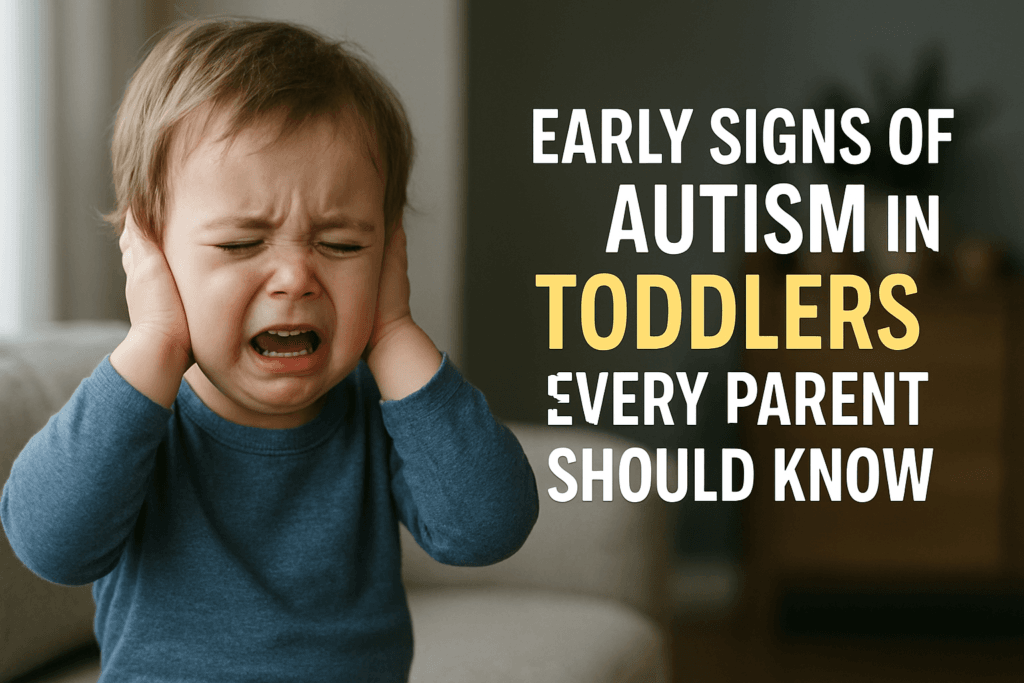🧠 Introduction: Why Early Detection Matters
Every child grows at their own pace — some speak earlier, some walk later. But when it comes to early signs of autism in toddlers, recognizing the subtle differences in development can make a lifelong difference. Early detection leads to earlier intervention, which improves social, emotional, and cognitive outcomes.
In this article, we’ll walk you through the most common red flags, developmental milestones to watch for, and when to take the next step toward diagnosis or support.
🧒 What Is Autism Spectrum Disorder (ASD)?
Autism Spectrum Disorder (ASD) is a neurological and developmental condition that affects how a child interacts, communicates, and learns. It’s called a “spectrum” because every child may experience autism differently — from mild to severe symptoms.
🔍 Top 10 Early Signs of Autism in Toddlers (12–36 Months)
1. Lack of Eye Contact
Your toddler rarely makes eye contact, even when you smile, speak, or try to engage them.
👀 Did you know? Most babies make eye contact by 6–8 weeks of age. A lack of it beyond 12 months may be an early sign.
2. Delayed Speech or No Babbling
By 12 months, most children begin to babble or say simple words like “mama” or “dada”. A toddler with autism may:
- Remain silent
- Lose previously learned words
- Struggle to mimic sounds
3. Limited Gestures
If your toddler doesn’t point, wave, or reach out to be picked up by 12–14 months, it could be a sign of a developmental delay.
4. Does Not Respond to Their Name
By one year, most toddlers respond when called. Children with ASD may seem as if they’re ignoring you — but it’s not rudeness, it’s neurological.
5. Avoids Social Interaction
They may:
- Prefer being alone
- Show little interest in playing with others
- Not smile back or engage in simple games like peek-a-boo
6. Repetitive Behaviors (Stimming)
You might notice:
- Hand flapping
- Rocking back and forth
- Repeating the same phrase or sound (echolalia)
These behaviors are known as self-stimulation (stimming) and can be a comfort mechanism.
7. Unusual Reactions to Sounds, Smells, or Textures
Autistic toddlers may:
- Cover their ears in normal environments
- Refuse to wear certain clothes
- React strongly to lights, smells, or sounds
8. Extreme Routines or Fixations
- Obsessed with a specific toy or object
- Upset by small changes in routine
- Lines up toys rather than playing with them
9. Delayed Motor Skills
Though not always present, some children may:
- Struggle with crawling, walking, or grasping objects
- Show clumsiness or poor balance
10. Limited Imaginative Play
By age 2, most children pretend to talk on the phone or feed a doll. A lack of pretend play may be a red flag.
🩺 When to Talk to Your Pediatrician
If you notice any combination of the signs above, trust your gut. You don’t need to wait. The American Academy of Pediatrics recommends autism screening at 18 and 24 months.
👉 Ask your pediatrician for a developmental screening or a referral to a child psychologist or developmental pediatrician.
📋 Downloadable Checklist
We’ve created a free “Early Signs of Autism in Toddlers” Checklist for parents.
📥 Click here to download your checklist (PDF)
🧩 What Happens After Diagnosis?
A diagnosis is not the end — it’s the beginning of understanding. Many children with ASD go on to thrive with therapies like:
- Speech and language therapy
- Occupational therapy
- Behavioral therapy (ABA)
- Parent coaching and support groups
🙌 How Autism Wings Inc. Can Help
At Autism Wings Inc., we’re committed to:
- Early diagnosis awareness
- Providing resources to families
- Advocating for inclusive education
- Building a support system for every child
❤️ Your donations help us reach more families in need. Please consider supporting our mission.
👉 Donate Now

